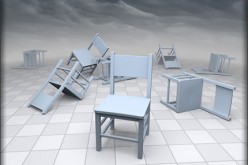Let’s explore why these inspections are so vital for the well-being of any college community.
What is College Infrastructure?
When you think of a college campus, you might picture lecture halls, libraries, and dormitories. While these are certainly key components, a campus’s infrastructure is much more extensive. It includes all the physical and organizational structures needed for the college to operate.
Buildings, such as academic halls, student housing, and administrative offices, are all part of the college’s infrastructure. Other aspects of infrastructure are electrical systems, water and sewage lines, and heating, ventilation, and air conditioning (HVAC) systems.
Even utility poles that support power lines, communication cables, and lighting across the campus are vital parts of the infrastructure that powers students’ academic careers. A failure in any one area can cause significant disruption.
The Importance of Regular Inspections
Keeping a campus safe, functional, and efficient requires a proactive approach. Regular infrastructure inspections help colleges achieve this in several important ways.
Ensuring Safety for Everyone
The primary reason for regular inspections is safety. Over time, buildings and utility systems can degrade. Electrical wiring can become outdated, structural components can weaken, and utility poles can be damaged by weather or age.
For large infrastructure pieces, such as utility poles, it can present a danger to everyone. Safely inspecting a utility pole is vital to keeping everyone safe and preventing injuries on campus. By addressing these problems early, colleges can prevent injuries and create a safer environment for everyone on campus.
Preventing Costly Disruptions
An unexpected infrastructure failure can bring campus life to a screeching halt. Imagine a power outage during final exams or a major water leak in a residence hall. These events are not only inconvenient but can also be incredibly expensive to fix, especially in an emergency.
Regular inspections allow maintenance teams to identify and address minor issues before they escalate into major problems. This proactive approach, known as preventative maintenance, helps avoid costly emergency repairs and minimizes disruptions to academic and residential life.
What a Good Inspection Looks Like
A comprehensive infrastructure inspection program should be systematic and well-documented. It involves:
- Visual Checks: Regularly walking the grounds to look for obvious signs of wear, damage, or potential risks.
- Detailed Assessments: Bringing in qualified engineers and technicians to perform in-depth evaluations of key systems like electrical grids, plumbing, and structural components.
- Data Management: Keeping detailed records of all inspections, findings, and repairs. This data is invaluable for tracking asset condition over time and planning future maintenance.
A Foundation for the Future
A college’s physical infrastructure is the foundation upon which its educational mission is built. Regular inspection of the college’s infrastructure protects both the day-to-day operations and overall safety of everyone on campus. It’s a vital practice that helps create a safe, reliable, and supportive environment where students and faculty can thrive.
Image Credentials: By Pedro, File 1317703688
end of post … please share it!
PAYING FOR COLLEGE: getting the aid you need
-------------------------------------------------------------------------------------------------------------
end of post idea
-------------------------------------------------------------------------------------------------------------
view home improvement ideas at our Photo Remodeling center
Helpful article? Leave us a quick comment below.
And please share this article within your social networks.






